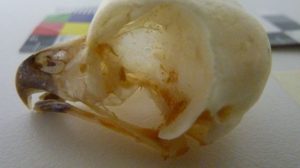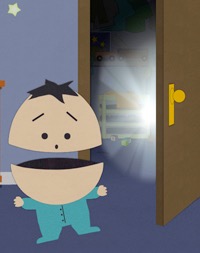An ancient virus could be responsible for human consciousness, giving you the ability to think for yourself.
 Researchers in the Dept. of Neurobiology at the University of Massachusetts Medical School have linked a human gene responsible for conscious thought to a virus that was spread in the early days of humanity.
Researchers in the Dept. of Neurobiology at the University of Massachusetts Medical School have linked a human gene responsible for conscious thought to a virus that was spread in the early days of humanity.
Two papers published in the journal Cell discuss the origins of the Arc gene, which packages up genetic information and sends it around nerve cells in little virus-style capsules.
Sean Keach of the New York Post writes these packages of information are believed to be critical to how our nerves communicate and could be responsible for our thoughts.
Elissa D. Pastuzyn, who authored one of the studies, said: “Evolutionary analysis indicates that Arc is derived from a vertebrate lineage of Ty3/gypsy retrotransposons, which are also ancestors to retroviruses.”
It’s believed that between 40 percent and 80 percent of the human genome was developed thanks to ancient viruses.
Viruses make active changes to your cells, injecting their own genetic code.
This can often be entirely useless — and sometimes causes harm, including the reproduction of more viruses — but occasionally we end up with useful modifications.
And it seems an ancient virus may have given rise to all human thought — thanks to the Arc gene.
Pastuzyn said that the virus was “repurposed during evolution, to mediate intercellular communication in the nervous system.”
James Ashley, who authored one of the studies, said: “The neuronal gene Arc is essential for long-lasting information storage in the mammalian brain, mediates various forms of synaptic plasticity and has been implicated in neurodevelopmental disorders.”
He added that mutations in the gene have been “linked to autism and schizophrenia,” which suggests that Arc has a pivotal role to play in how we perceive and react to the world around us.
Retrovirus-like Gag Protein Arc1 Binds RNA and Traffics across Synaptic Boutons
Cell Volume 172, Issues 1-2, p262–274.e11
Arc/Arg3.1 is required for synaptic plasticity and cognition, and mutations in this gene are linked to autism and schizophrenia. Arc bears a domain resembling retroviral/retrotransposon Gag-like proteins, which multimerize into a capsid that packages viral RNA. The significance of such a domain in a plasticity molecule is uncertain. Here, we report that the Drosophila Arc1 protein forms capsid-like structures that bind darc1 mRNA in neurons and is loaded into extracellular vesicles that are transferred from motorneurons to muscles. This loading and transfer depends on the darc1-mRNA 3′ untranslated region, which contains retrotransposon-like sequences. Disrupting transfer blocks synaptic plasticity, suggesting that transfer of dArc1 complexed with its mRNA is required for this function. Notably, cultured cells also release extracellular vesicles containing the Gag region of the Copia retrotransposon complexed with its own mRNA. Taken together, our results point to a trans-synaptic mRNA transport mechanism involving retrovirus-like capsids and extracellular vesicles.








